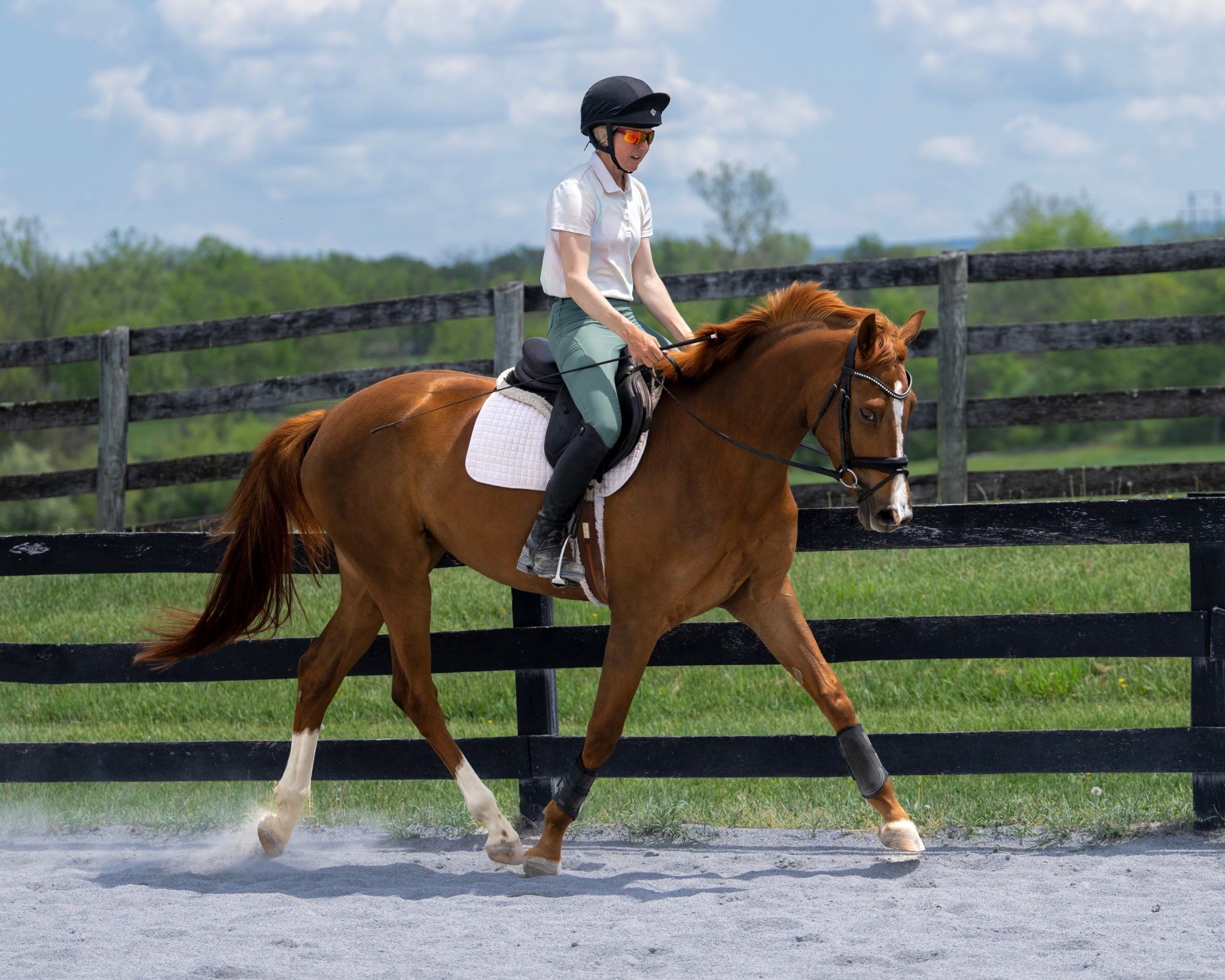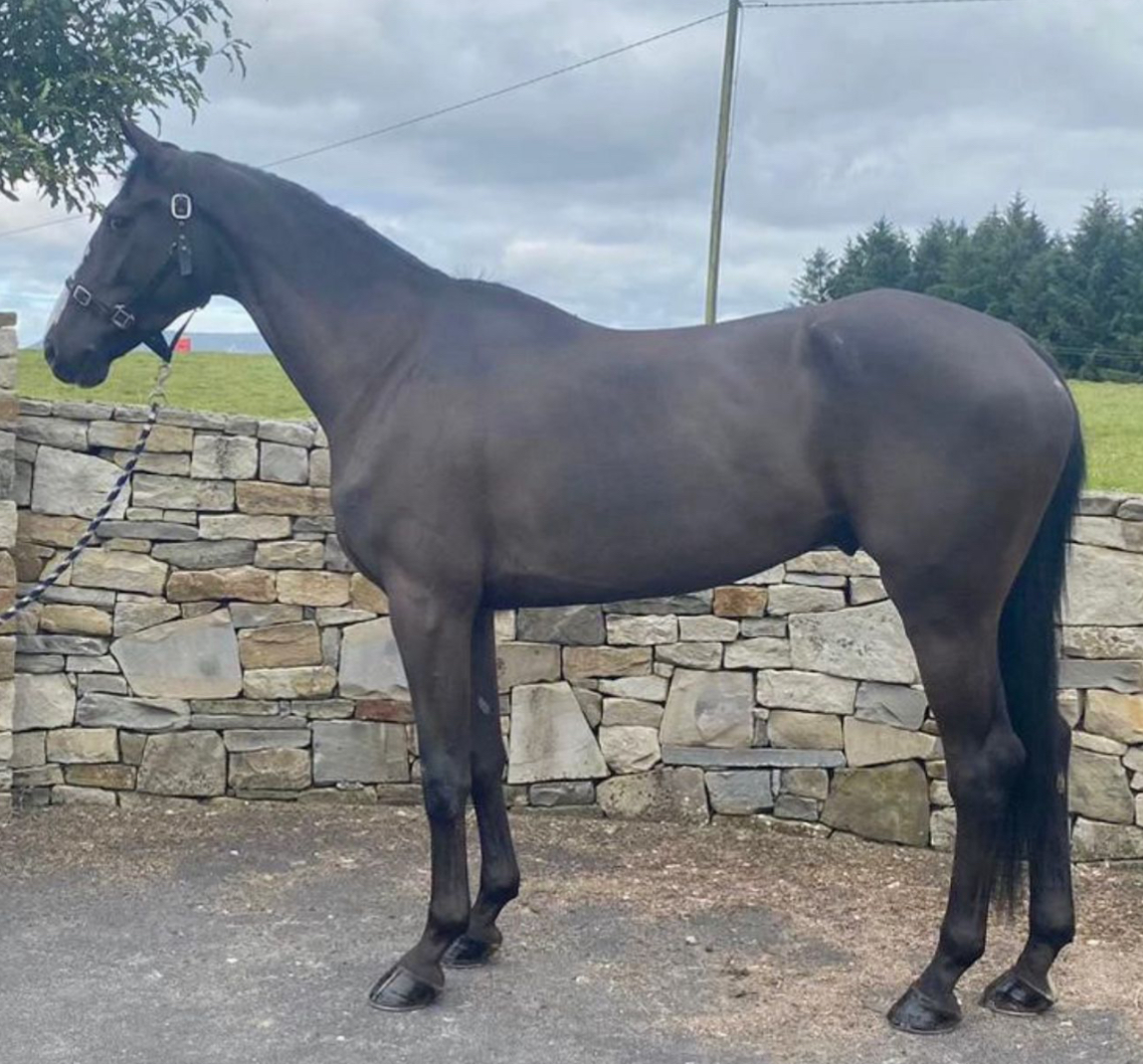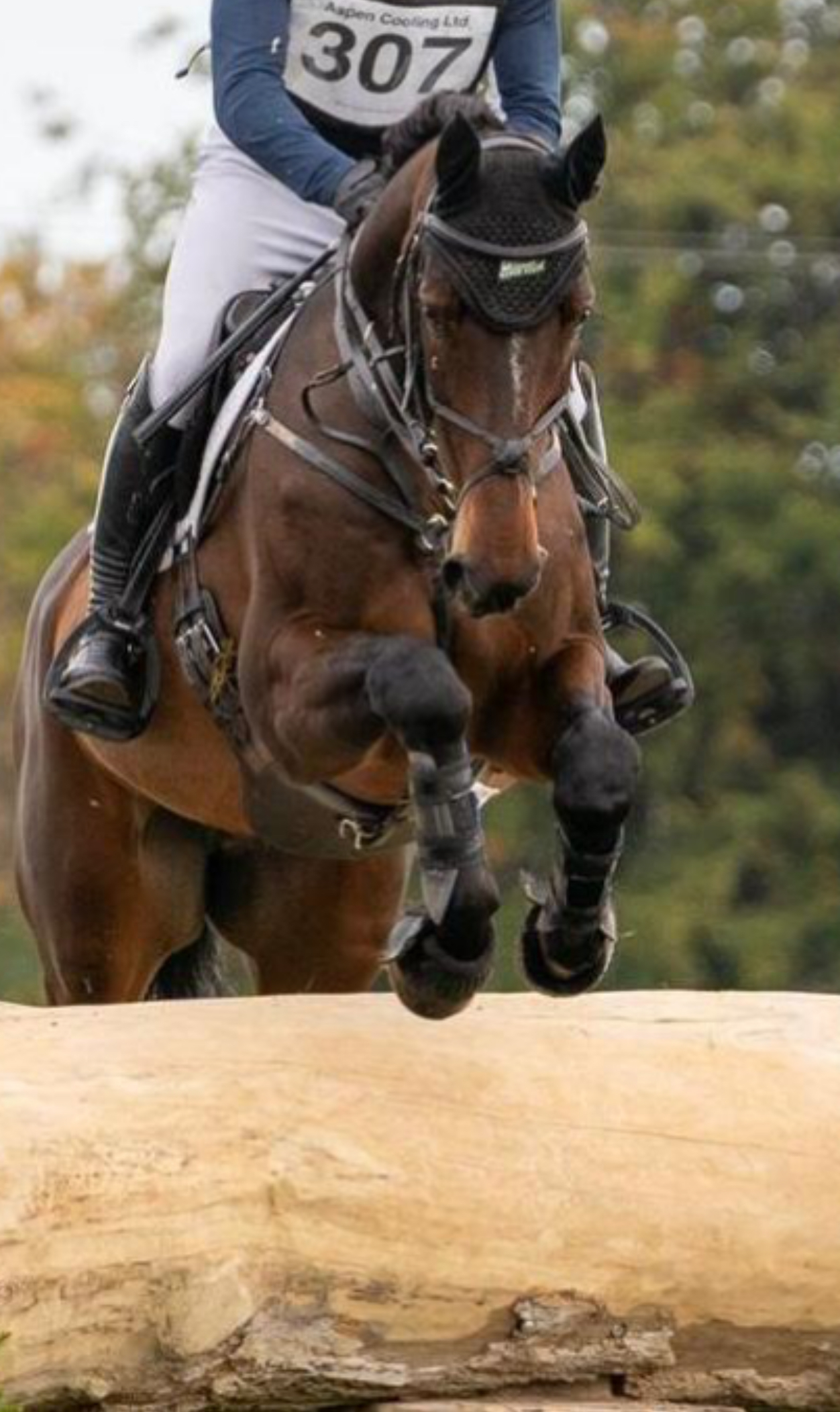
Clinics are wonderful experiences, but what should the expectation be in terms of “problems solved”? Photo courtesy of JJ Sillman.
In the world we live in, the spread of information is faster than ever. We’re constantly filming, tweeting, posting, and consuming information from our closest friends to people we’ve never met before. We follow those we admire on social media, and stay up-to-date on what top athletes are doing as we go about our days. This is how most of us found a disturbing viral video this weekend of disgraceful behavior from one of the most lauded eventing athletes of all time.
The video features footage of Mark Todd repeatedly whipping a horse from behind with a branch as he encourages the rider to keep going, while the horse is obviously distressed and fearful. The intention was to get the horse to go down a drop into the water.
Now, for me, this isn’t even really about Mark Todd. There are endless negative words to describe what he did — but he isn’t the first top rider to display a loss of temper, nor will he be the last. However, carrying the mantle of horse trainer, at any level, comes with a responsibility to hold yourself accountable to a higher standard of behavior, and to never allow ego or negative emotions to take over. Is what Mark Todd did somehow worse because he is wildly successful and riders all around the world look up to him? Yes and no. It would be a distasteful for anyone, but it’s newsworthy because it proves that this “training method” exists even at the highest levels.
A clinic is not the place to resolve real training issues. Clinics are group lessons with very strict time schedules and very little individual attention. If you have a serious problem teaching your horse something, it will take time and patience to resolve in an impactful way. Clinics lend themselves to an urgency for producing immediate results, and that, more often than not, leads to frustration, anger, and bad decisions. They are expensive to attend, and both the rider and the trainer can feel pressure to perform in a way that is not always beneficial to the horse on the day.
A better solution to a problem would be to find a way to ensure some version of success that both rider and horse can achieve with confidence and happiness, and give them resources for working towards the final answer. The solution is not to resort to force, and most certainly not abuse. There is a distinct difference between discipline and abuse, with one being an appropriate correction and the other being a result of ego and anger.

The focus of education should always be building a greater partnership. Photo by Jenni Autry.
Abusive and forceful methods of training often produce quick and visible results. They also produce unknown long-term effects that are rarely positive. In effect, you are telling your horse that they should be more afraid of the pain that you will cause than they are afraid of not obeying your commands. That isn’t exactly a relationship you want to cultivate. Aren’t we always talking about how real success comes from partnership and a good understanding relationship between horse and rider? Why are we not pursuing this all the time?
The bigger issue is that this behavior is widespread, from lower levels all the way up to the highest achieving individuals of this sport. High level riders behaving in this way makes it seem acceptable for others to do that too, because they are also seeking success. And it works right? The horse went into the water! However, did that horse leave that interaction with a good feeling? Will it willingly jump into the water next time? I don’t want my horse to jump the jump, I want my horse to want to jump the jump. He should never be choosing between two different fears: me or the jump.
If your horse is never allowed to say no, answering with a yes doesn’t mean very much, does it? Horses are remarkably trainable and compliant animals, and they don’t wake up in the morning considering ways they’re going to piss you off and get your goat. If you replace the word obedience with ability to correctly respond, you can change your perspective on what is happening. When your ego gets involved, and you feel a need to impose your will upon an animal, you’ve lost the plot.
When horses are not in a mental or physical place of balance that allows them to complete a task, they will express that as stiffness or resistance, and they will say no. Our job as rider is to set them up for success, as that is how you create confidence. Mental and physical balance are intimately related in horses, so when they aren’t prepared, they cannot truly learn or receive information properly. Your job as a rider and trainer is to acknowledge this, and not dismiss it as irrelevant information.
What is our goal in training horses? Do we simply want to create mindless robots that respond obediently, but with no enthusiasm, to our every command? Small but consistent acts of disregard and force are a pathway to learned helplessness, when horses lose their intrinsic motivation to do their jobs with enjoyment, and lose the ability to feel fulfilled while doing so. When horses or humans lose that motivation, they do things because they have no choice, and all they are trying to do is avoid punishment. This “training” relies on domination, punishment and exhaustion.

We want our horses to want to do their jobs, not choose between fears. Photo courtesy of Joan Davis/Flatlandsfoto.
What’s additionally disheartening is a major takeaway that comes from these incidents: be careful what you allow to be filmed or be careful who you allow in your stables to potentially film you. To that, I say this: how about instead of worrying about getting caught for abusing a horse, perhaps try not abusing horses in the first place. If a horse is not responding to leg aids, before resorting to whipping it repeatedly from the ground, why not address the efficacy of the rider’s leg aids? Why not address the clear fear and confusion the horse is presenting, and help them calm down and process the moment? Or realize, that perhaps today isn’t the day.
The answer is time, ego, fear of failure, and laziness. The right way to train horses is time consuming, and most often at the most inopportune time. It’s lazy to resort to force and abuse, just because you don’t want to be embarrassed in front of clients, there doesn’t seem to be time to devote to answering the problem in an empathetic and positive manner, or because you’ve lost patience with a horse who keeps answering a question incorrectly. Maybe you’ve also been taught that you should never leave an question unanswered, or that you can’t let a horse “get away with” an issue.
While I wish that this rider had been able to stand up for her horse and decline this situation, I also understand that she was young, and Mark is older and famous. The pressure to comply with somebody who is that much more knowledgeable than you is great, and I think we’ve all been there. The job going forward is for all of us to be more open about condemning these actions, maybe especially when they come from the very famous and very successful. Encourage good horse training, more empathy, and more kindness in our methods.
Responding to this video is not a part of “cancel culture”, but rather an effort to dismantle a culture that allows and normalizes abuse and fear-based training methods to continue in the larger equestrian community. And not only does this culture affect our horses’ well-being, it also affects our sport and lifestyle on a whole. Even now, major corporate sponsors associated with both Mark Todd and equestrian sport have voiced displeasure at the incident, and the general public will never understand normalized abuse. The longevity of our sport and livelihood is fragile, and the internet never forgets.
How you treat your animals is how you interpret the world, and dismissing a perspective outside of your own is a distasteful habit that many have fallen into. We can do better, and we can promote superior training methods for the benefit of horses and riders everywhere.










































